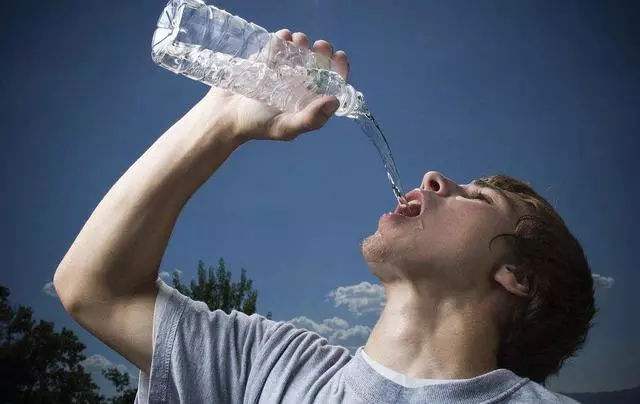
(单词翻译:单击)
听力文本
Plastics in Drinking Water Are a Concern
The World Health Organization says levels of plastic in drinking water present a low risk to health, but need more research.
On Thursday, the WHO released a report on microplastics, particles smaller than five millimeters.
Bruce Gordon is the WHO's coordinator for water, sanitation and hygiene. He said one of the main findings of the report is: "If you are a consumer drinking bottled water or tap water, you shouldn't necessarily be concerned."
However, Gordon said that the available information is "weak" and that more research is needed. He also urged a greater effort to reduce plastic pollution.
Andrew Mayes teaches chemistry at Britain's University of East Anglia. He was not part of the WHO study. He said that microplastics did not appear to be a health worry for now.
But he added that stronger measures are needed to reduce plastic waste.
"We know that these types of materials cause stress to small organisms," he said. "They could be doing a lot of damage in unseen ways."
Health concerns center on smaller particles that get into drinking water and into human digestive systems.
A study supported by the Word Wildlife Fund and released in June said that plastic is widespread throughout the environment. It estimated that people may be eating or drinking as much as five grams of plastic each week. That is equal to the amount of plastic in a credit card.
Plastics are everywhere
The study found that plastics exist throughout the environment and have been found in sea water, freshwater, food and drinking water.
Possible risks from microplastics come from small particles, chemicals and microorganisms that stick to plastic materials.
Gordon said that the WHO would continue to study levels of microplastics in water. However, he said that higher importance is given to proven risks in drinking water such as bacteria that cause typhoid and cholera.
The report notes that microorganisms are the biggest threat to healthy drinking water. For example, research blames 485,000 deaths in 2016 on drinking water infected with microbes.
"These are the things that cause immediate illness and can kill millions of people," Gordon said.
I'm Mario Ritter Jr.
重点解析
1.stick to 粘住;坚持
Obviously we are disappointed but the committee could do nothing less than stick to the rules.
我们显然很失望,但委员会只能照章办事,别无他法。
2.sea water 海水
The sea water foams under the bow.
海水在船首下面泛起浪花。
3.drinking water 饮用水
The villagers piped in drinking water from the reservoir
村民用管道从水库引来饮用水。
4.credit card 信用卡
Using a credit card to pay for an order is simplicity itself.
用信用卡支付订单再简单不过了。
5."They could be doing a lot of damage in unseen ways."
a lot of 很多
I think a lot of people still underestimate him.
我觉得很多人仍然低估了他。
You've caused us a lot of trouble.
你给我们造成了很多麻烦。
6.That is equal to the amount of plastic in a credit card.
be equal to 与...相等
I could't find a person who can be equal to this work.
你不可能找到更能胜任这个工作的人了。
They want to be equal to men in this way.
她们想在这方面与男性平等。
参考译文
饮用水中微塑料不构成健康威胁
世界卫生组织表示,饮用水中的塑料含量对健康的风险较低,但是仍需要进行更多的研究。
周四,世界卫生组织发布了一份关于粒子直径小于5毫米的微塑料的报告。
布鲁斯·戈登(Bruce Gordon)是世界卫生组织水、环境卫生和个人卫生事务协调员。他表示,该报告的重大发现之一是:“如果你饮用的是瓶装水或自来水,请放心。”
然而,戈登表示,现有的信息是“薄弱”的,需要进行更多研究。他还督促加大力度减少塑料污染。
安德鲁·梅耶斯(Andrew Mayes)在英国东安格利亚大学教授化学。他并未参与世卫组织的这项研究。他说,目前微塑料似乎不会构成健康威胁。

但他补充说,需要采取更有力的措施来减少塑料垃圾。
他指出:“我们知道这类材料会对小生物造成压力。它们可能会以(人类)看不见的方式造成巨大的伤害。”
健康问题集中在进入饮用水和人体消化系统的细微颗粒上。
一项由世界野生生物基金会赞助并于今年6月发布的研究表明,塑料在环境中随处可见。据估计,人们每周会摄入多达5克塑料,分量相当于一张信用卡。
塑料无处不在
该研究发现,塑料存在于整个环境中,海水、淡水、食物和饮用水中均有所发现。
微塑料的潜在风险来自于附着在塑料材料上的小颗粒、化学物质以及微生物。
戈登表示,世卫组织将会继续研究水中的微塑料含量。然而,他指出,人们更忠实的是饮用水中的已知风险,例如会导致伤寒和霍乱的细菌。
该报告指出,微生物是健康饮用水的最大威胁。例如,研究认为2016年有48.5万人的死亡归因于感染了微生物的饮用水。
戈登表示:“这些会导致直接疾病,或造成数百万人死亡。”
小马里奥·里特为您播报。
译文为翻译,未经授权请勿转载!
